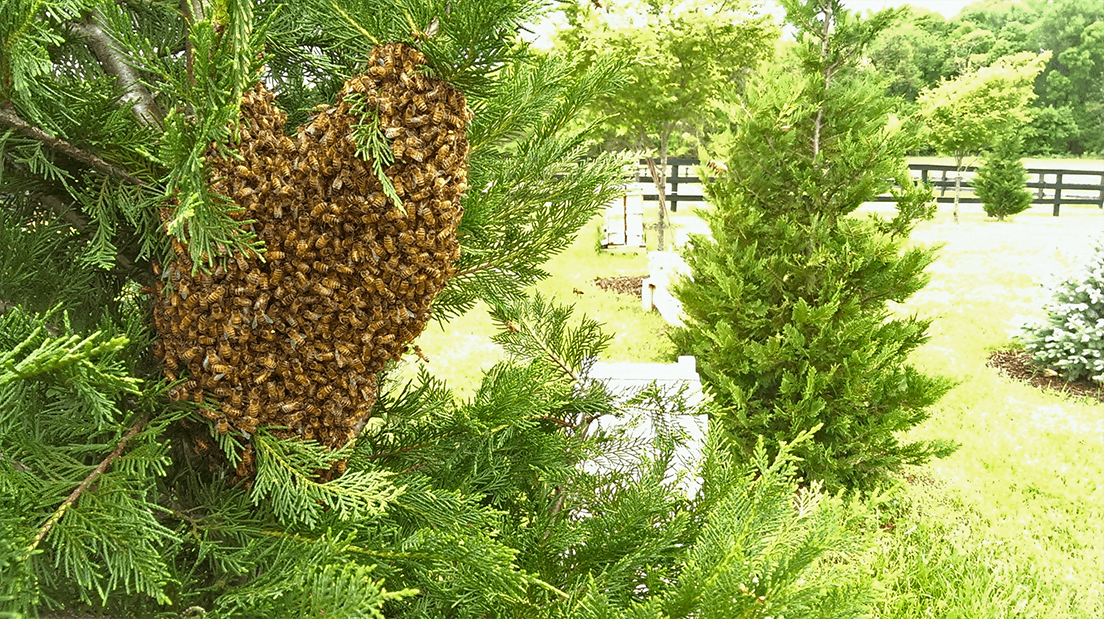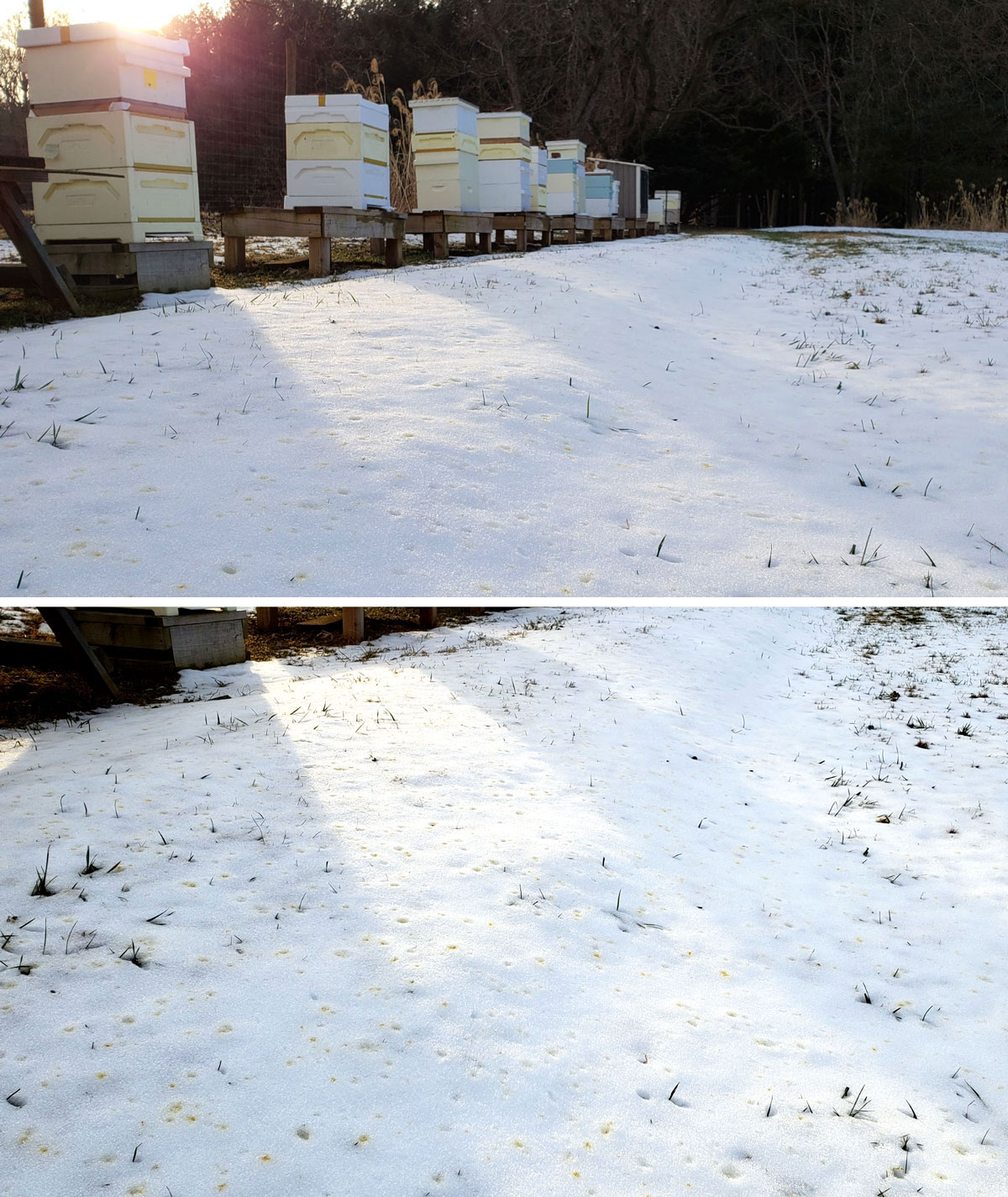Feeding pollen patties in a top-bar hive can be a challenge. Ideally, the pollen patty should be placed above the brood nest so the nurse bees can readily access it. In a top-bar hive, where the comb is normally attached directly to the bar, feeding in this manner is not possible. Pollen patties placed on the walls or floor of the hive generally go unused and become a haven for hive beetles. That’s one of the reasons that I developed the Safe-Passage Comb Guide, so that I could effectively feed pollen patties. The passage the guide creates directly below the top-bar that runs the entire length of the comb is a perfect place to insert pollen patties.
While it’s wonderful to celebrate successes, it’s equally important to learn from failures 😢. This colony swarmed and re-queened itself near the end of July. I had assumed it would have a low mite count due to the brood break but I was wrong. When I finally did a mite count at the end of August, my treatment was too late to positively impact their winter preparations. Yep, a top-bar hive dead-out. Mother Nature is quite the teacher.
Natural Comb Doesn’t Prevent Varroa Mites
Bees in top-bar hives are every bit as prone to varroa mites as bees kept in Langstroth hives and it is therefore vital to monitor mite levels and take appropriate steps to correct the situation when infestation levels get out control. Clearly I failed this time but generally when my mite levels are at or exceed 4% I treat. Oxalic Acid vapor or dribble works great in a broodless period. When there is brood present I use formic acid if there is honey in the hive that I would like to harvest (FormicPro) or thymol (ApilifeVar or Apiguard) if I will not be harvesting honey.
Apilife Var and Apiguard are easy to apply when using the Safe-passage Comb Guide as you can slip the tablet (Apilife Var) or the gel (Apiguard) into the passage the comb guide creates. Formic Pro can fit into the passage as well but it is a bit more work to get situated in the hive. You should not cut the formic pro pad into smaller sections as this will change the rate at which it off-gasses so you have to slide the entire pad through the passage of 3 or 4 bars at a time. You can do it, take your time.
Setbacks Happen
Keeping bees in the time of varroa is indeed a challenge. By remaining vigilant, monitoring mite levels, and taking appropriate actions when the situation gets out of control you can generally stay ahead of problems and avoid a dead-out. Of course you may have the occasional setback as I did in this situation. If that’s the case, preserve the good comb and try again in the spring. That comb is gold and a new colony of bees will appreciate the head start.
Happy beekeeping!
In my book, the spring is marked by the first phone call of the year requesting that I come catch a honey bee swarm or remove bees from an old tree or building. Yesterday I received my first call of the season. It must be spring!

We’ve been experiencing a bit of a cold spell so the bees haven’t had many opportunities to get out and go to the restroom. While I know they were doing well before the cold snap, I always wonder if they are continuing to do well when I can’t check in on them.
Yellow Snow Dots – the Bees Are Fine
It’s tough to sit back during cold periods and just wonder if the bees are doing okay. When things do warm up for a couple of hours the bees take advantage of the warmer temps to take “cleansing flights” and relieve themselves. While they can hold their feces for quite a while at a certain point, you just gotta go. This past weekend it warmed up a bit for a short time but I wasn’t able to make it to the apiary during the time they would have been flying. When I did stop by, just as the sun was going down, from all of the yellow dots in the snow it was clear that they had been quite active with cleansing flights and were doing just fine. Remember, don’t eat yellow snow.

Yellow dots in the snow. Evidence that the bees are okay and have been taking cleansing flights.
It’s mid-January and we have had quite a long cold spell so it’s the perfect time for treating for bee colonies with Oxalic Acid vapor as brood rearing should be at a minimum. Yesterday’s temperatures were a little over 40 degrees and there was no wind — a perfect day for the vaporizer. When the vapor hits the cluster a strong colony like the one in this little Nuc will roar as it fans and moves the air around. It’s nice confirmation in the wintertime that the colony is alive and strong.
